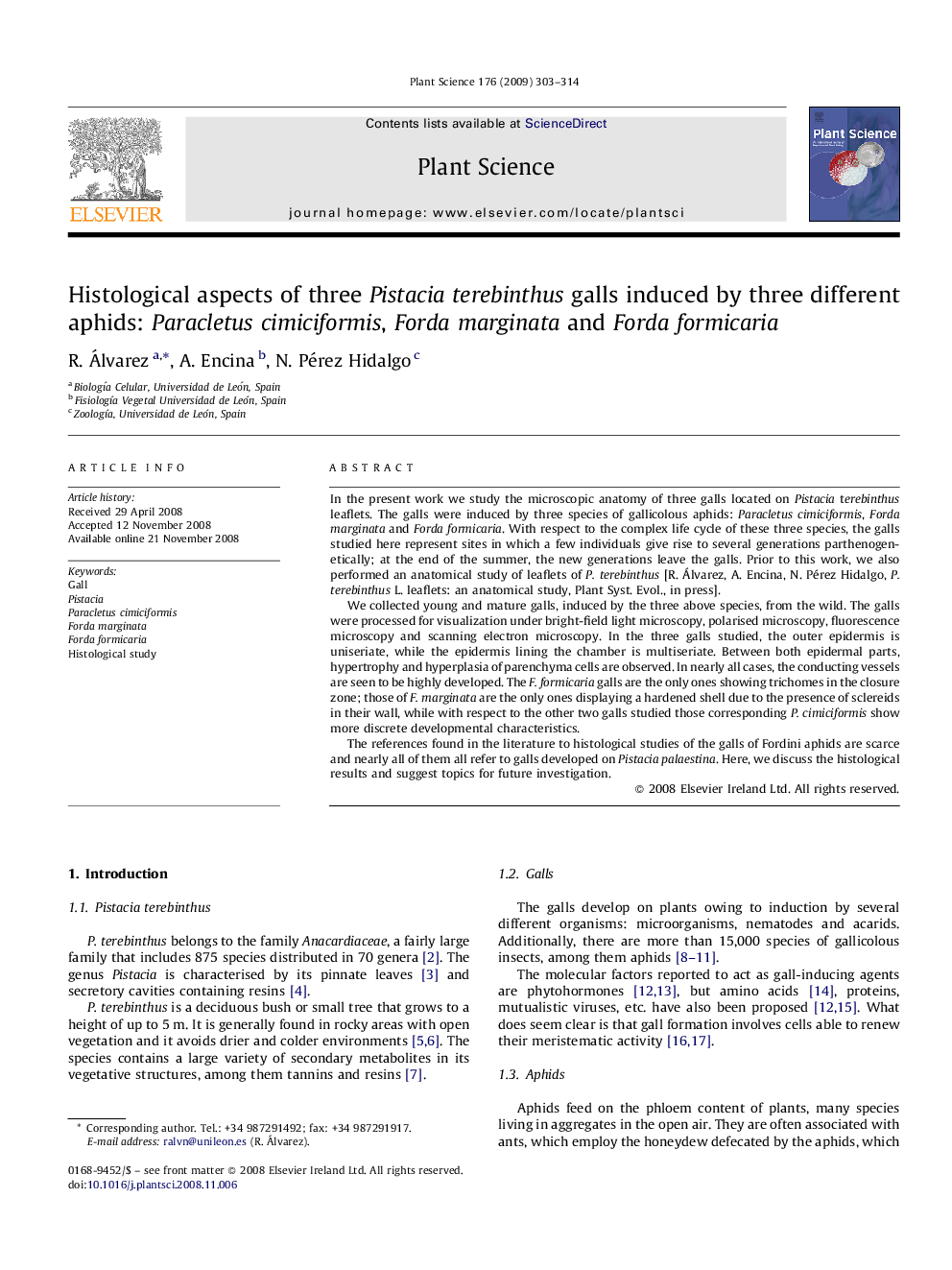| Article ID | Journal | Published Year | Pages | File Type |
|---|---|---|---|---|
| 2017758 | Plant Science | 2009 | 12 Pages |
In the present work we study the microscopic anatomy of three galls located on Pistacia terebinthus leaflets. The galls were induced by three species of gallicolous aphids: Paracletus cimiciformis, Forda marginata and Forda formicaria. With respect to the complex life cycle of these three species, the galls studied here represent sites in which a few individuals give rise to several generations parthenogenetically; at the end of the summer, the new generations leave the galls. Prior to this work, we also performed an anatomical study of leaflets of P. terebinthus [R. Álvarez, A. Encina, N. Pérez Hidalgo, P. terebinthus L. leaflets: an anatomical study, Plant Syst. Evol., in press].We collected young and mature galls, induced by the three above species, from the wild. The galls were processed for visualization under bright-field light microscopy, polarised microscopy, fluorescence microscopy and scanning electron microscopy. In the three galls studied, the outer epidermis is uniseriate, while the epidermis lining the chamber is multiseriate. Between both epidermal parts, hypertrophy and hyperplasia of parenchyma cells are observed. In nearly all cases, the conducting vessels are seen to be highly developed. The F. formicaria galls are the only ones showing trichomes in the closure zone; those of F. marginata are the only ones displaying a hardened shell due to the presence of sclereids in their wall, while with respect to the other two galls studied those corresponding P. cimiciformis show more discrete developmental characteristics.The references found in the literature to histological studies of the galls of Fordini aphids are scarce and nearly all of them all refer to galls developed on Pistacia palaestina. Here, we discuss the histological results and suggest topics for future investigation.
